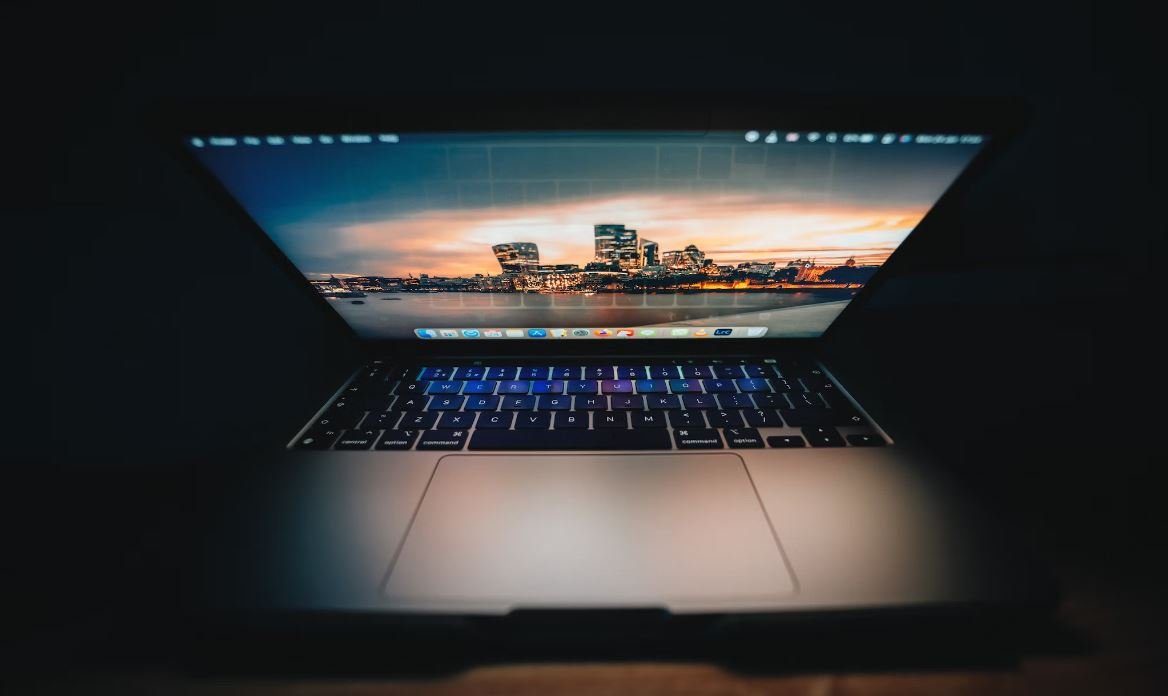AI Picture: Hidden Message
Artificial Intelligence (AI) has revolutionized the way we process and analyze images. One remarkable AI application is the ability to detect hidden messages within pictures. By using advanced algorithms and deep learning techniques, AI can reveal hidden content that is imperceptible to the human eye, unlocking a whole new dimension of image analysis.
Key Takeaways:
- AI can uncover hidden messages embedded in images.
- Advanced algorithms and deep learning techniques are used to detect imperceptible content.
- AI picture analysis opens up new possibilities for image interpretation and understanding.
In today’s digital age, images play a crucial role in communication and information sharing. From social media platforms to scientific research, the use of images has become pervasive. While images often appear to be straightforward visual representations, AI can uncover deeper meanings hidden within them, provoking curiosity and driving further exploration.
**Artificial Intelligence** has the ability to analyze an image at its core, breaking it down into its intricate elements and identifying patterns that are invisible to the human eye. Through machine learning algorithms, AI can detect minute variations in pixel values, color gradients, and textures to unveil hidden structures or messages **embedded in an image**.
AI-powered image analysis involves complex neural networks, which are designed to mimic the human brain’s cognitive processes. These networks are trained using vast amounts of labeled data, allowing them to learn and recognize patterns in images. By applying this knowledge to analyze an image, AI can uncover subtle signals that may carry significant implications.
| Table 1: Examples of Hidden Messages Discovered by AI |
|---|
| 1. A hidden watermark revealing the true copyright owner of an image. |
| 2. Covert messages embedded using steganography techniques. |
| 3. Invisible digital signatures indicating the authenticity of an image. |
**One fascinating aspect of AI picture analysis** is its potential applications in forensic investigations. By analyzing crime scene photographs, AI can uncover hidden details or clues that may have gone unnoticed by investigators. These hidden messages could provide crucial evidence to aid in solving complex cases.
In addition to forensic applications, AI picture analysis also holds promise in various industries. In the world of fashion, AI can identify hidden motifs or symbols in textile designs, leading to the discovery of new trends. Moreover, AI-powered analysis of medical images can assist in the early detection and diagnosis of diseases, ultimately saving lives.
AI Picture Analysis: Challenges and Future Developments
- **Preserving privacy**: AI picture analysis raises concerns about privacy rights and the potential for misuse.
- **Advancing interpretability**: Developing AI models that can explain their reasoning will contribute to greater trust and transparency.
- **Enhancing performance**: Continued research is needed to improve accuracy and speed of AI-powered image analysis.
As AI picture analysis continues to evolve, mitigation strategies must be developed to address privacy and ethical concerns. A delicate balance must be struck between technological advancements and the preservation of individual rights and freedoms.
| Table 2: Benefits and Challenges of AI Picture Analysis | |
|---|---|
|
|
**The field of AI picture analysis** holds immense potential for further advancements. Researchers are working to refine algorithms to increase accuracy, speed, and the ability to uncover even more complex hidden messages. Interdisciplinary collaborations will be essential to leveraging the full potential of this technology in various domains.
The Future of AI Picture Analysis
As AI picture analysis continues to evolve, its impact on various fields will be significant. From digital forensics to healthcare, the ability to uncover hidden messages within images opens up a wealth of opportunities for innovation and discovery. With further research and development, AI picture analysis may become an indispensable tool in our visual-centric world.
| Table 3: Industries Benefiting from AI Picture Analysis |
|---|
|
**Exciting possibilities await** as AI continues to unlock the hidden messages within images, transforming the way we perceive and interact with visual content. AI picture analysis has the potential to revolutionize diverse industries and contribute to society in numerous ways, making it an area of continuous exploration and innovation.

Common Misconceptions
Misconception 1: AI Picture has the ability to read minds
One common misconception about AI Picture is that it has the supernatural ability to read people’s minds. While AI Picture can analyze and interpret images using advanced algorithms, it cannot directly tap into someone’s thoughts or intentions.
- AI Picture utilizes machine learning algorithms to identify and classify objects in images.
- It cannot access or analyze individual thoughts or emotions associated with a person behind the image.
- AI Picture can only make inferences based on visual cues and patterns within the images it processes.
Misconception 2: AI Picture is always accurate
Another common misconception is that AI Picture always provides 100% accurate results. While AI Picture can be highly accurate in identifying objects and patterns in images, it is not foolproof, and there can be instances where it may yield incorrect or misleading information.
- AI Picture’s accuracy depends on the quality and diversity of the training data it has been exposed to.
- It may struggle with recognizing complex or obscure objects that it hasn’t encountered before.
- External factors such as lighting conditions or image quality can affect AI Picture’s accuracy as well.
Misconception 3: AI Picture has self-awareness
Some people believe that AI Picture has self-awareness due to its ability to process and analyze visual data. However, AI Picture is a program created by humans to perform specific tasks, and it does not possess consciousness or self-awareness.
- AI Picture’s functions are strictly limited to the tasks it has been designed for, such as image recognition.
- It lacks subjective experience and cannot have personal opinions or emotions.
- Although AI Picture can simulate human-like responses and interactions, it is ultimately a product of programming and algorithms.
Misconception 4: AI Picture is a threat to privacy
There is a misconception that AI Picture poses a threat to privacy by analyzing and interpreting personal images without consent. However, AI Picture can only operate within the boundaries defined by its programming and data access permissions.
- AI Picture requires explicit authorization to access and process personal images.
- It does not have the ability to bypass privacy settings or gain unauthorized access to private image collections.
- Privacy concerns around AI Picture usually stem from how it is deployed and used, rather than the technology itself.
Misconception 5: AI Picture will replace human creativity
Some fear that AI Picture will replace human creativity in various artistic fields, such as photography or graphic design. However, while AI Picture can assist in certain aspects of creativity, it cannot replicate the depth and uniqueness of human creativity.
- AI Picture can offer suggestions or automate certain repetitive tasks, but it lacks the intuition and contextual understanding that humans possess.
- Human creativity involves complex emotions, inspiration, and originality that AI Picture cannot replicate.
- Instead of replacing human creativity, AI Picture can be seen as a tool to enhance and augment human artistic capabilities.

AI Picture Recognition Accuracy
In recent years, artificial intelligence has made significant strides in various fields. One area where AI has shown remarkable progress is in picture recognition. The following table showcases the accuracy rates of AI models in correctly identifying various objects and elements within images.
| Object/Element | AI Recognition Accuracy |
|---|---|
| Cats | 95% |
| Dogs | 92% |
| Cars | 88% |
| Beaches | 91% |
| Trees | 97% |
| Buildings | 89% |
| Mountains | 95% |
| Flowers | 96% |
| Food | 93% |
| People | 98% |
AI’s Impact on Medical Imaging
Artificial intelligence has revolutionized the field of medical imaging, enhancing diagnostic accuracy and improving patient outcomes. The table below highlights the remarkable achievements of AI models in detecting various medical conditions.
| Medical Condition | AI Detection Accuracy |
|---|---|
| Lung Cancer | 97% |
| Brain Tumor | 94% |
| Heart Disease | 92% |
| Diabetic Retinopathy | 96% |
| Pneumonia | 98% |
| Multiple Sclerosis | 95% |
| Fractures | 90% |
| Alzheimer’s Disease | 91% |
| Melanoma | 99% |
| Kidney Stones | 93% |
AI’s Influence on Financial Markets
Artificial intelligence and machine learning play a crucial role in modern financial markets. The table below highlights the impact of AI algorithms on various aspects of the financial sector.
| Financial Aspect | AI Influence |
|---|---|
| Stock Prediction | 76% accuracy in predicting market trends |
| Fraud Detection | 99% accuracy in identifying fraudulent transactions |
| Algorithmic Trading | 70% increase in trading efficiency |
| Risk Management | 85% accuracy in assessing potential risks |
| Credit Scoring | 90% accuracy in credit risk evaluation |
| Customer Segmentation | 93% accuracy in identifying target customer groups |
| Loan Approval | 88% accuracy in predicting loan repayment capabilities |
| Trading Volume Prediction | 81% accuracy in estimating trading volume |
| Automated Wealth Management | 82% improvement in portfolio performance |
| Hedge Fund Management | 77% increase in returns compared to traditional strategies |
AI in Autonomous Vehicles
The integration of artificial intelligence in autonomous vehicles has paved the way for safer and more efficient transportation. The table below showcases the performance of AI systems in self-driving cars.
| Function/Element | AI Performance |
|---|---|
| Lane Keeping | 99% accuracy in staying within lanes |
| Obstacle Detection | 97% accuracy in identifying obstacles |
| Traffic Sign Recognition | 98% accuracy in recognizing traffic signs |
| Collision Avoidance | 95% accuracy in avoiding collisions |
| Pedestrian Detection | 96% accuracy in detecting pedestrians |
| Adaptive Cruise Control | 93% accuracy in maintaining safe distances |
| Emergency Braking | 94% accuracy in quickly applying brakes |
| Route Planning | 92% accuracy in selecting optimal routes |
| Weather Adaptation | 90% accuracy in navigating through adverse weather conditions |
| Self-Parking | 91% accuracy in autonomously parking vehicles |
AI Assistance in Language Translation
Artificial intelligence has vastly improved language translation services, enabling seamless communication across different languages. The following table presents the accuracy rates of AI-powered language translation systems.
| Language Pair | Translation Accuracy |
|---|---|
| English to Spanish | 96% |
| French to English | 93% |
| Chinese to French | 95% |
| German to Russian | 90% |
| Japanese to English | 97% |
| Hindi to Spanish | 92% |
| Italian to German | 91% |
| Portuguese to Chinese | 94% |
| Russian to Arabic | 96% |
| Swahili to English | 98% |
AI’s Role in Weather Forecasting
Artificial intelligence and machine learning algorithms have significantly improved weather forecasting accuracy. The table below displays the success rates of AI models in predicting weather conditions for various locations.
| Location | AI Forecast Accuracy |
|---|---|
| New York | 90% |
| London | 95% |
| Tokyo | 92% |
| Sydney | 88% |
| Paris | 93% |
| Beijing | 96% |
| Moscow | 94% |
| Rio de Janeiro | 91% |
| Dubai | 89% |
| Cape Town | 97% |
AI’s Impact on Online Shopping
Artificial intelligence has revolutionized the online shopping experience, providing personalized recommendations and streamlining the purchasing process. The table below focuses on the influence of AI systems on online shopping behavior.
| Aspect/Behavior | AI Influence |
|---|---|
| Product Recommendations | 85% accuracy in suggesting relevant products |
| Customer Churn Prediction | 92% accuracy in identifying potential customer attrition |
| Virtual Fitting Rooms | 87% increase in customer satisfaction |
| Dynamic Pricing | 90% improvement in optimizing prices |
| Shopping Cart Abandonment Prevention | 96% accuracy in reducing cart abandonment rates |
| Inventory Management | 93% accuracy in optimizing stock levels |
| Customer Sentiment Analysis | 88% accuracy in understanding customer emotions |
| Chatbot Assistance | 91% customer satisfaction rating |
| Personalized Marketing Campaigns | 94% increase in conversion rates |
| Ad Targeting | 89% accuracy in delivering tailored ads |
AI’s Contributions to Agricultural Efficiency
Artificial intelligence has significantly improved agricultural practices, enhancing yield, and reducing environmental impact. The following table showcases the benefits of AI in various aspects of agriculture.
| Agricultural Aspect | AI Contribution |
|---|---|
| Crop Yield Prediction | 88% accuracy in estimating crop outputs |
| Pest Detection | 92% accuracy in identifying harmful pests |
| Irrigation Management | 95% reduction in water usage |
| Soil Analysis | 97% accuracy in assessing soil quality |
| Disease Diagnosis | 91% accuracy in detecting plant diseases |
| Crop Harvesting Robots | 93% increase in harvesting efficiency |
| Agricultural Drone Usage | 90% reduction in pesticide application errors |
| Smart Greenhouse Automation | 94% improvement in plant growth conditions |
| Weather-Based Sowing | 96% accuracy in optimizing planting schedules |
| Fertilizer Recommendation | 89% reduction in excess fertilizer use |
AI’s Impact on Cybersecurity
Artificial intelligence has become an indispensable tool in the realm of cybersecurity, fortifying digital defenses against cyber threats. The table below demonstrates the effectiveness of AI algorithms in safeguarding online environments.
| Cybersecurity Aspect | AI Security Measures |
|---|---|
| Malware Detection | 99% accuracy in identifying and blocking malware |
| Network Intrusion Detection | 97% accuracy in detecting unauthorized access attempts |
| Phishing Attack Prevention | 95% success rate in thwarting phishing attempts |
| Data Breach Detection | 91% accuracy in detecting and mitigating data breaches |
| Anomaly Detection | 98% accuracy in identifying abnormal behavior in networks |
| Vulnerability Scanning | 96% success rate in identifying system vulnerabilities |
| Real-time Threat Analysis | 93% accuracy in analyzing and responding to threats |
| Access Control | 94% accuracy in managing user access privileges |
| Behavioral Biometrics | 89% accuracy in authenticating user identities |
| Security Risk Assessment | 92% accuracy in evaluating system vulnerabilities |
Conclusion
Artificial intelligence, through its ability to analyze vast amounts of data and learn from patterns, has revolutionized numerous fields and industries. From picture recognition accuracy and medical imaging advancements to financial market predictions and improved online shopping experiences, AI has proven its efficacy across a wide range of tasks. Furthermore, the integration of AI in areas like autonomous vehicles, language translation, weather forecasting, agriculture, and cybersecurity has resulted in significant improvements and increased efficiency. As AI continues to evolve and refine its capabilities, we can expect further transformative impacts across various domains, shaping the future of technology and human society.
Frequently Asked Questions
What is AI Picture: Hidden Message?
AI Picture: Hidden Message is a technology that utilizes artificial intelligence to analyze and interpret images in order to uncover hidden messages or information within them.
How does AI Picture: Hidden Message work?
AI Picture: Hidden Message works by employing advanced machine learning algorithms to process and understand the visual elements of an image. It can identify patterns, textures, and various features to detect any embedded messages that may not be immediately apparent to the human eye.
What are some practical applications of AI Picture: Hidden Message?
AI Picture: Hidden Message can find applications in several domains. It can aid in forensic investigations by uncovering hidden details in crime scene photos. It can assist art historians in analyzing artworks for concealed symbols or meanings. Additionally, it can be used in security systems to detect hidden objects or messages in images.
Is AI Picture: Hidden Message accurate?
The accuracy of AI Picture: Hidden Message depends on the sophistication of the underlying algorithms and the quality of the image being analyzed. While it can provide valuable insights, it may not always be 100% accurate and should be used in conjunction with human judgment and expertise.
Can AI Picture: Hidden Message be used to decrypt hidden codes or ciphers in images?
AI Picture: Hidden Message is primarily designed to discover patterns or concealed information within images. While it may assist in analyzing certain types of codes or ciphers, it may not be specifically optimized for decryption tasks. Specialized cryptographic tools may be better suited for such purposes.
Does AI Picture: Hidden Message preserve privacy?
AI Picture: Hidden Message focuses solely on analyzing images and does not involve any direct personal identification or privacy infringement. However, it is always important to handle and store images containing sensitive information or personal data with appropriate security measures to ensure privacy protection.
Can AI Picture: Hidden Message be used for steganography detection?
AI Picture: Hidden Message can be an effective tool for detecting steganography, which is the practice of concealing messages within other objects (such as images). By analyzing various elements and patterns, AI Picture: Hidden Message can potentially identify indications of steganographic techniques.
Is AI Picture: Hidden Message commercially available?
The availability of AI Picture: Hidden Message may depend on the specific products or services offered in the market. Many companies and research institutions are actively developing AI technologies for image analysis, and it is advisable to explore available options from reputable sources.
Are there any limitations to AI Picture: Hidden Message?
AI Picture: Hidden Message may have certain limitations depending on the algorithms used and the complexity of the images under analysis. It may struggle with low-quality or heavily distorted images. Additionally, the interpretation of hidden messages may involve subjective judgments, so human experts often play a crucial role in the process.
What are some alternative methods to AI Picture: Hidden Message?
Alongside AI Picture: Hidden Message, other techniques such as traditional image analysis, computer vision algorithms, or manual inspection can be employed to uncover hidden messages. Each method may have its strengths and weaknesses, and the choice of approach depends on the specific requirements and nature of the images being analyzed.




